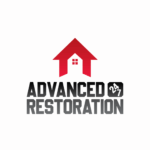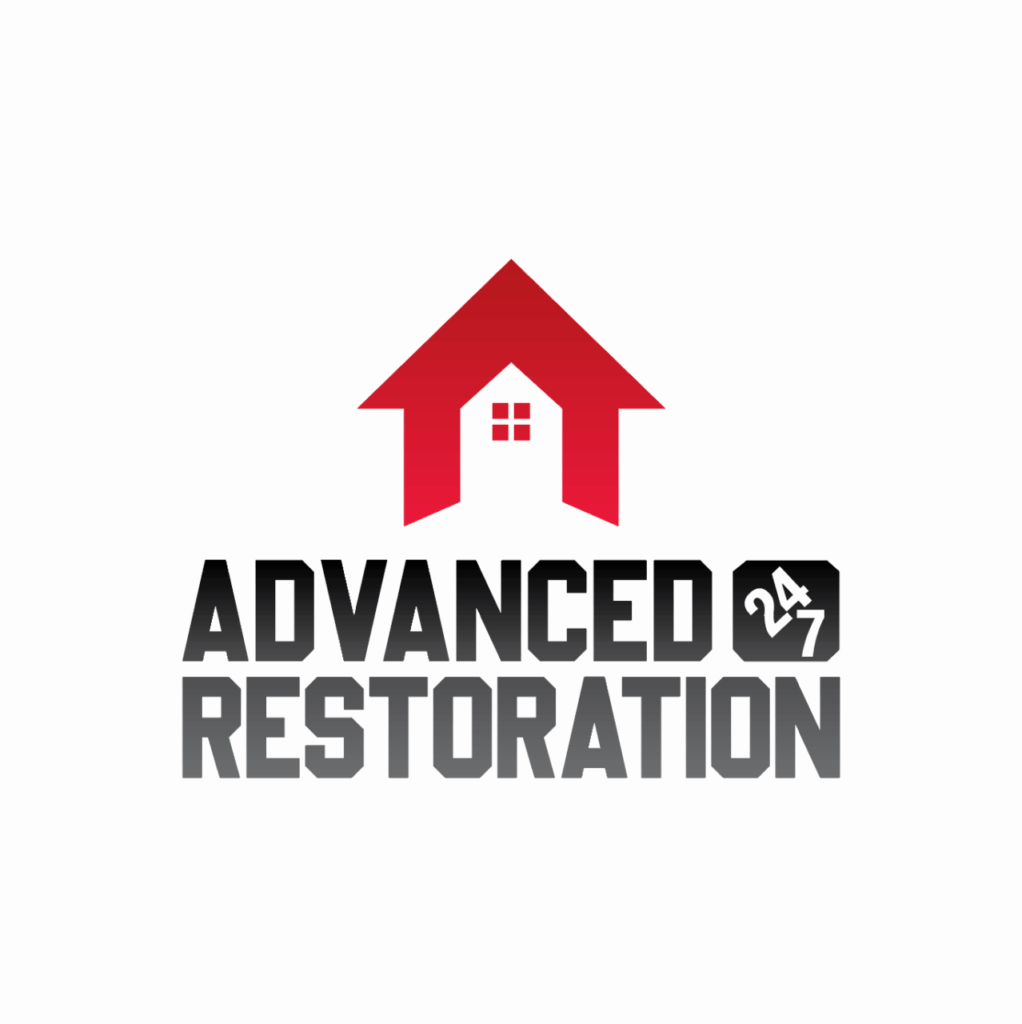Water damage is a homeowner’s worst nightmare. It’s bad enough when a pipe bursts or a fire sprinkler suddenly goes off. But the worst type of water damage is the kind you can’t see — the slow drips hidden behind walls that quietly spread until your ceiling collapses or mold begins to grow.
Unnoticed leaks behind walls are insidious. Left untreated, they quietly spread, leading to costly repairs, health hazards, and structural issues. This comprehensive guide will explore what happens when water gets in your walls, what to do about it, and the cost of professional water damage repair.
What Happens When Water Gets Inside Your Walls
Water damage inside walls is one of the most serious and hidden problems homeowners face. Moisture trapped behind drywall or plaster can silently spread for weeks or months before you notice visible signs. By the time the damage becomes apparent, your home’s structure and even your health may already be at risk.
- Structural Damage: Water can weaken the structural integrity of your walls, causing them to warp, crack, or even collapse over time.
- Insulation Damage: Slow leaks can cause insulation materials to become saturated and degraded, reducing their effectiveness and increasing energy bills.
- Increased Repair Costs: Repairing water damage between walls is often more complex and costly because it requires tearing down the wall to address the issue properly.
- Paint and Wallpaper Damage: Water can cause paint to bubble, peel, or blister, ruining the appearance of your walls. Wallpaper may also become discolored or detached from the wall.
- Electrical Issues: Water leaking into electrical components within your walls can cause short circuits, electrical fires, or damage to appliances.
How Bad Is the Water Damage?
Understanding the severity of water damage is essential for determining the right restoration plan. Water damage inside walls and other areas is typically classified into three main factors: saturation level, contamination, and evaporation rate.
Class 1: Minimal Damage
Class 1 water damage involves the least amount of moisture and affects only a small, confined area. It usually originates from a clean water source, such as a broken pipe or a leaky faucet. Because the evaporation rate is slow, drying and restoration are relatively straightforward, and minimal structural damage is expected.
Class 2: Significant Damage
Class 2 water damage affects a larger area and often involves porous materials like drywall, flooring, or carpet. The moisture level is higher, and the evaporation rate is moderate, requiring more advanced drying methods. Structural damage becomes more likely in Class 2 scenarios.
Class 3: Extensive Damage
Class 3 water damage is the most severe category, involving significant flooding or prolonged exposure to water. Water saturates walls, ceilings, insulation, and flooring, and may come from contaminated sources. Restoration often requires structural repairs, mold remediation, and professional-grade dehumidification to thoroughly dry the affected areas.
Hidden Dangers of Water Damage
Water damage inside walls can hide several dangers that may not be immediately apparent. It’s important to recognize these hidden risks to avoid significant water damage later.
- Mold Growth: Mold is a common by-product of water damage and can develop rapidly, especially in hidden spaces within walls. Mold spores can pose health risks to occupants and should be addressed promptly.
- Weakening of Building Materials: Water can weaken structural materials over time. For instance, prolonged exposure to moisture can lead to the deterioration of wooden framing, compromising the stability of your home.
- Electrical Hazards: Water and electricity do not mix well. If water infiltrates walls and comes into contact with electrical wiring or outlets, it can create hazardous conditions, including electrical fires.
The Role of Restoration Professionals and How to Prepare
Water damage restoration is a complex process that requires specialized knowledge, equipment, and precision. Professional restoration teams play a crucial role in assessing, repairing, and preventing further damage to ensure your home is safe and habitable. At the same time, homeowners can take several steps to prepare for restoration, enabling professionals to work more efficiently and minimize further losses.
- Assessment and Inspection: Restoration experts conduct a comprehensive inspection to determine the full extent of the damage, including hidden moisture, mold, and any underlying structural concerns. This initial evaluation guides the development of a customized restoration plan.
- Water Extraction: Professionals utilize high-powered pumps and vacuums to remove standing water and mitigate significant damage quickly. Prompt extraction helps prevent further deterioration and mold growth.
- Drying and Dehumidification: Specialized drying equipment, including industrial-grade dehumidifiers and air movers, thoroughly dries the affected areas. Technicians continuously monitor moisture levels to ensure complete drying and prevent hidden damage.
- Mold Detection and Remediation: Certified specialists employ advanced containment and removal techniques to eliminate mold colonies safely. Antimicrobial treatments are then applied to discourage future growth.
- Structural Repairs: When water compromises the integrity of walls, ceilings, or floors, restoration professionals replace or reinforce damaged materials, such as drywall, framing, and insulation.
- Content Restoration: Specialized cleaning and restoration methods are employed to salvage personal items, furniture, and textiles whenever possible, enabling homeowners to recover both their property and peace of mind.
Homeowners can also help streamline the restoration process by taking the following steps before professionals arrive:
- Keep Emergency Contacts Handy: Include your restoration company, insurance provider, and local utility services.
- Document the Damage: Take photos and videos of all affected areas for insurance.
- Create an Emergency Kit: Include flashlights, batteries, first aid supplies, medications, and important documents.
- Review your homeowners’ insurance policies: We often overlook the details of our policies until an emergency arises. Not all policies cover water damage.
- Know your main water shut-off valve: Turning it off quickly can prevent additional flooding and structural damage.
- Establish a family emergency plan: Ensure everyone knows what to do and who to contact in the event of water damage or other emergencies.
What to Do if You Get Water Damage in Your Walls
When you discover water damage inside your walls, taking immediate action to mitigate further damage is essential. Here’s a step-by-step guide on what to do about water damage in walls:
- Remove Standing Water: Wet/dry vacs make this job easier, but if you don’t have one, you’ll need to rely on towels to soak up the water.
- Safety First: Ensure your safety by turning off electricity to the affected area to avoid electrical hazards.
- Remove Damaged Materials: Remove any wet or damaged materials such as insulation, drywall, and flooring to prevent mold growth and structural issues.
- Dry the Area: Utilize fans, dehumidifiers, and open windows to facilitate drying. Ensure the area is completely dry before proceeding with repairs.
- Inspect for Mold: Check for signs of mold and mildew. If you suspect mold growth, consult a professional for mold remediation.
- Repair the Source: Address the source of the water intrusion, whether it’s a plumbing issue or a leaky roof. Fixing the source is crucial to preventing future damage.
- Wall Repairs: Depending on the extent of the damage, you may need to replace damaged drywall, insulation, and other materials. This is a job best left to professionals.
- Paint and Restore: Once the repairs are complete, repaint and restore your walls to their former condition. Use mold-resistant paint to prevent future issues.
Average Water Damage Repair Costs
| Repair Type | Average Cost Range |
| Assessment & Inspection | $100 – $300 |
| Materials (drywall, insulation, paint) | $300 – $1,000+ |
| Labor | $50 – $100 per hour |
| Mold Remediation | $500 – $6,000+ |
| Structural Repairs | $2,000 – $10,000+ |
| Paint & Restoration | A few hundred – several thousand |
Mold Growth and Health Risks After Water Damage
There is a direct connection between water damage and the growth of mold. Mold thrives in environments with high humidity and moisture, making water-damaged walls an ideal location for its invasion. The excess humidity triggers the activation of mold spores, leading to their rapid multiplication. Spores are released into the air and inhaled, making them a potential health hazard.
How Can Mold Affect Your Health?
Mold exposure isn’t just a superficial concern; it can have significant implications for your health, particularly if you have allergies, respiratory issues, or a compromised immune system. Some common health effects of mold exposure include:
- Allergic Reactions: Mold spores can trigger allergic reactions, which can include sneezing, a runny nose, and itchy eyes.
- Asthma Aggravation: Individuals with asthma may experience intensified symptoms when exposed to mold.
- Respiratory Distress: Prolonged mold exposure can result in respiratory problems, including persistent coughing and difficulty breathing.
Get Dried Out With Water Damage Restoration Services in Denver
Denver, Colorado, is no stranger to water damage issues. The city’s climate, with its occasional heavy rainfall and snowmelt, can put homes at risk of water intrusion. When you’re facing water damage in Denver, it’s crucial to choose a reputable and experienced water damage restoration company like Advanced 24/7 Restoration, which can do the emergency remediation quickly and help you with the insurance company.
24/7 Emergency Service — Water damage doesn’t wait for business hours, and neither do we. Advanced 24/7 Restoration offers round-the-clock emergency service, ensuring a rapid response when you need it most.
IICRC-Certified Technicians — Our team of professionals is certified by the Institute of Inspection, Cleaning, and Restoration Certification (IICRC), guaranteeing that your water damage restoration is handled by experts.
State-of-the-Art Equipment — We use the latest equipment and techniques to detect and mitigate water damage, ensuring a thorough restoration process.
Comprehensive Restoration — From water extraction and drying to mold remediation and structural repairs, we provide emergency services to get your home back in top condition.
Local Expertise: As a local Denver-based company, we understand the unique challenges the city’s climate poses and can tailor our services accordingly.
Advanced 24/7 Restoration’s mission is to provide unparalleled care and support to our valued clients. Delivering the best solutions for your property restoration needs. Our vision is to be the top-rated damage restoration company in Denver, known for our exceptional services, professionalism, and dedication to customer satisfaction. Water damage, fire damage, flood damage, and more.
- This author does not have any more posts


